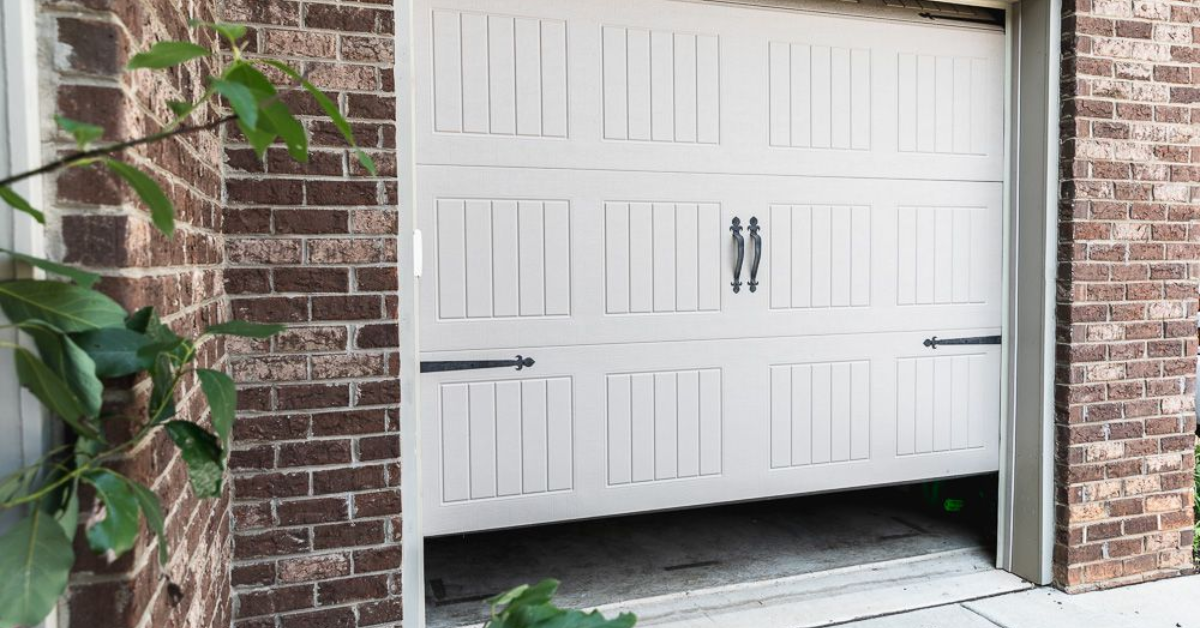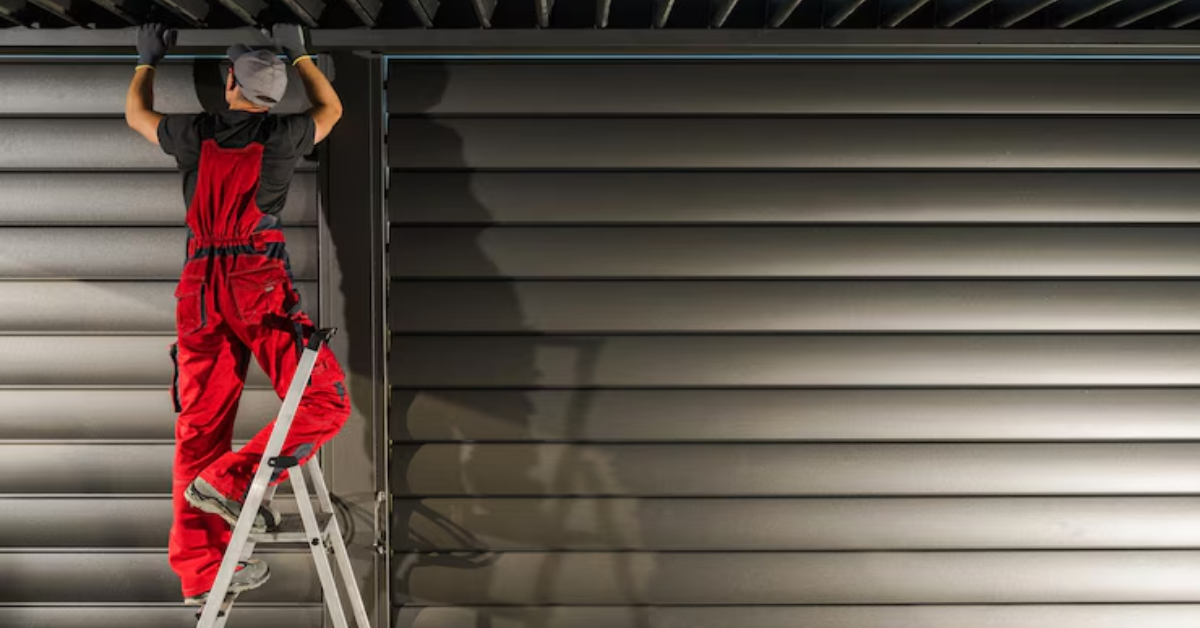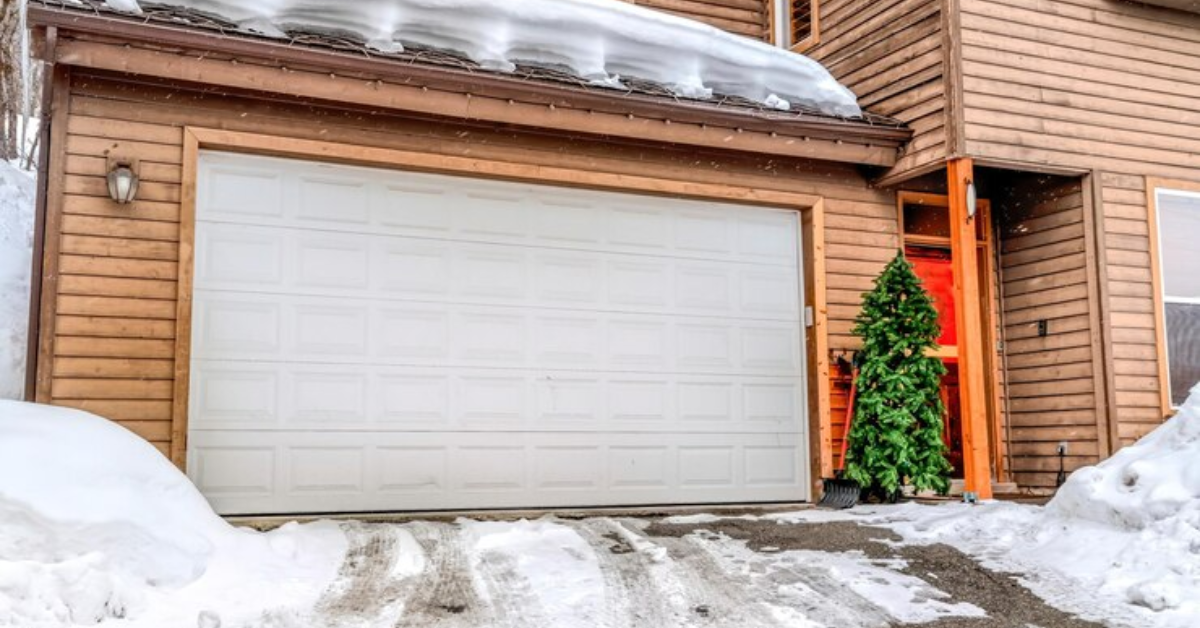Reasons Why Your Garage Door Opener Isn’t Working
A properly functioning garage door opener is a vital component of any home, offering convenience, security, and ease of access. However, when your garage door opener malfunctions, it can disrupt daily routines and compromise the safety of your home. Understanding the reasons behind these malfunctions is crucial to swiftly address and resolve the issues. In this comprehensive exploration, we uncover the complexities surrounding common garage door opener malfunctions, aiming to illuminate the typical issues resulting in an inoperable opener. From power supply concerns to sensor misalignments, this comprehensive exploration aims to equip you with the knowledge needed to diagnose and troubleshoot these issues effectively.
The primary objective of this post is to empower homeowners with insights into the various reasons why a garage door opener might cease to function. By unraveling these complexities, we
provide a roadmap for troubleshooting, enabling you to tackle these issues proactively and restore the seamless operation of your garage door opener. Join us on this journey to uncover the underlying causes behind non-operational garage door openers and gain valuable insights into practical solutions for these common problems.
Power Supply Problems
Garage door openers rely on power sources, commonly batteries, to function efficiently. When these batteries are low or depleted, it significantly impacts the performance of the opener. A low battery in the remote control or keypad can cause a delay or complete failure in sending signals to the opener, leading to unresponsiveness. This can manifest as the door not opening or closing despite repeated attempts. Moreover, weakened batteries might produce weak signals, reducing the effective range of the remote, making it necessary to be closer to the opener for it to function.
Replacing the batteries in the remote or keypad regularly, typically every one to two years depending on usage, is crucial to ensure consistent and reliable performance. It's advisable to use high-quality batteries to maximize their lifespan and maintain a strong signal transmission between the opener and control devices.
Electrical Outages
Electrical outages or interruptions pose another common challenge for garage door openers. Sudden power cuts or fluctuations can disrupt the opener's functionality. During a power outage, the opener might become unresponsive, rendering the remote or keypad useless. To address power interruptions, consider installing a backup power source such as a UPS (Uninterruptible Power Supply) or a backup battery system designed for garage door openers. These backup systems ensure that the opener remains functional even during power outages, allowing you to operate the garage door manually or through the backup power source.
Checking the circuit breaker or fuse box connected to the garage door opener can help identify and rectify issues related to power supply interruptions. Ensuring a stable and reliable power source is crucial for the optimal performance of the garage door opener, minimizing the impact of electrical outages on its operation.
Remote Control and Keypad Malfunctions
Signal interference is a common issue affecting the functionality of garage door opener remotes and keypads. Various sources can disrupt the signals sent from these devices to the opener, leading to inconsistent or failed operations. Identifying and eliminating these sources of interference is key to resolving this problem.
Potential sources of signal interference include:
- Electronic devices operating on similar frequencies, such as wireless routers, baby monitors, or cordless phones.
- Metal objects or structures near the garage door opener that can block or weaken the signal.
- Environmental factors like radio frequency interference from nearby transmission towers or power lines.
To tackle signal interference:
- Identify and relocate electronic devices that operate on frequencies close to that of the opener. Separating these devices or changing their positioning can reduce interference.
- Ensure that there are no metal objects obstructing the signal path between the remote/keypad and the opener. Adjusting the positioning of the opener or relocating obstacles can help.
- Consider installing signal repeaters or range extenders to strengthen the signal transmission between the control device and the opener.
Programming Errors: Steps to rectify programming issues
Programming errors often lead to malfunctioning garage door openers, especially when remotes or keypads are not correctly programmed or synchronized with the opener. To address programming issues, it's crucial to follow the manufacturer's instructions meticulously to ensure the proper sequence for programming the remote control or keypad. This involves resetting the programming by clearing existing codes and reprogramming the device according to the specified steps outlined in the manual. Additionally, make sure the opener's "learn" button is activated within the programming window to receive signals from the remote or keypad effectively. Conduct a thorough check for any physical obstructions that might impede the programming mechanism, such as dirt accumulation or damage on the opener's control panel, ensuring unobstructed functionality.
Sensor Interference and Misalignment
Garage door openers are equipped with safety sensors that prevent the door from closing if an obstruction is detected in the doorway. However, these sensors can encounter issues when obstructed themselves. Dust, debris, or even accidental repositioning can obstruct the sensors, leading to malfunctioning operations.
To address sensor blockages:
- Inspect the sensors, usually installed near the bottom of the garage door tracks, for any visible obstructions.
- Clean the sensors using a soft, dry cloth to remove dirt, cobwebs, or debris that might be hindering their function.
- Ensure that the sensors are securely positioned and aligned, allowing them to 'see' each other across the door threshold without any obstructions.
Alignment Troubles
Proper alignment of the garage door sensors is critical for their optimal function. Misaligned sensors can result in the door not closing or reopening unexpectedly even when there are no obstructions present.
To align the sensors effectively:
- Use a level to ensure that each sensor is positioned at the same height and angle.
- Loosen the mounting brackets and gently adjust the sensors until they are perfectly aligned with each other.
- Tighten the mounting brackets securely once the sensors are aligned to maintain their position.
- Test the garage door opener to ensure it operates smoothly without any issues.
Regularly checking for sensor blockages and ensuring proper alignment plays a crucial role in maintaining the functionality and safety features of the garage door opener. By addressing sensor interference and misalignment, homeowners can prevent unnecessary disruptions in the operation of their garage doors and ensure the safety of their property and loved ones.
Opener Motor Concerns
The motor within a garage door opener serves as the powerhouse driving its opening and closing mechanisms. Yet, over time, various factors can contribute to motor failures, resulting in an erratic or non-functional garage door opener. Diagnosing these failures involves paying attention to telltale signs like unusual sounds—grinding, humming, or straining noises—while operating the opener, as they often indicate underlying motor issues. Additionally, checking for signs of overheating, like a hot or burning smell around the motor unit, serves as a critical indicator.
When addressing motor burnout, a few potential fixes can aid in restoring functionality. Ensuring proper ventilation around the motor unit, clearing any debris or obstructions hindering airflow, can help mitigate overheating issues. Moreover, adhering to the manufacturer's recommendations and lubricating moving parts reduces friction and stress on the motor, potentially extending its lifespan. However, severe motor damage or burnout that's irreparable might necessitate professional repair or a complete replacement to restore the garage door opener's optimal function.
Gear and Chain Issues: Inspection and maintenance tips
The gears and chains in a garage door opener are crucial components responsible for transmitting power from the motor to the door. Issues with these components can result in noisy operation, jerky movements, or the door not opening or closing properly.
Inspection and maintenance tips:
- Regularly inspect the gears and chains for signs of wear, damage, or misalignment.
- Clean the gears and chains to remove dirt, debris, or built-up grease that might impede their function.
- Lubricate the gears and chains as per the manufacturer's recommendations to ensure smooth operation.
In the case of worn-out gears or chains, replacement might be necessary to restore the proper functionality of the garage door opener.
Track Misalignment and Door Obstructions
Proper alignment of the tracks guiding the garage door's movement is essential for its smooth and efficient operation. Misaligned tracks can lead to jamming, sticking, or uneven door movements, significantly impacting the opener's performance. Adjusting track alignment involves a systematic approach: first, inspect the tracks for misalignment, gaps, or bends, then, loosen the mounting brackets holding the tracks without fully removing them. Gently tapping the tracks with a rubber mallet to align them properly and using a level to ensure straightness and parallelism is crucial. Once aligned, securely tighten the mounting brackets to maintain alignment. Regularly checking and adjusting track alignment mitigates strain on the opener, ensuring the door's smooth movement.
Obstructions in the garage door's path can disrupt its operation and pose challenges for the opener. These obstructions often include objects or debris blocking the door's travel path or getting lodged in the tracks. Identifying and removing obstructions involve a thorough inspection of the door's entire travel path, including the tracks, to clear any obstructive items like tools, boxes, or debris. Ensuring the tracks remain free from obstacles or foreign objects promotes the door's smooth movement and prevents damage to both the door and the garage door opener. Addressing track misalignment and consistently clearing the door's path from obstructions contribute to maintaining the efficient operation of the garage door opener, enhancing its performance and longevity.
Environmental and Weather Impact
Extreme temperatures exert a significant influence on the mechanics of a garage door, causing notable effects on its operation. In freezing temperatures, the metal components contract, leading to stiffness or sluggish movement, while extreme heat prompts expansion, potentially causing misalignment or stress on the opener. To counter these impacts, applying appropriate lubricants to metal parts like hinges, springs, and tracks aids in maintaining smooth functionality despite temperature fluctuations. Installing insulation within the garage helps regulate internal temperatures, lessening the adverse effects of extreme weather on the door and opener mechanisms.
Moisture, stemming from rain, snow, or humidity, poses a threat of rust and corrosion to the metal components of garage doors and openers. Rust weakens these parts, impacting their functionality and durability. Preventive measures involve applying rust-resistant coatings or paints to safeguard metal components against moisture. Regular inspections and cleaning of the door's tracks, hinges, springs, and other metal parts aid in removing accumulated moisture or debris. Maintaining adequate ventilation within the garage mitigates humidity levels, diminishing the likelihood of rust formation.
Routine Maintenance Neglect
Regular lubrication is crucial for the smooth and efficient operation of a garage door opener. Components such as hinges, rollers, springs, and tracks require adequate lubrication to minimize friction and wear.
Importance of regular maintenance:
- Lubricating moving parts reduces friction, preventing premature wear and tear, and ensuring smooth operation.
- Use a high-quality silicone-based or lithium-based lubricant recommended by the manufacturer for optimal results.
- Apply lubricant to the rollers, hinges, tracks, and springs at least twice a year to maintain proper functionality and extend the lifespan of these components.
- Neglecting lubrication can lead to increased friction, resulting in noisy operations, strain on the opener, and potential breakdowns.
Spring Tension
Garage door springs serve a pivotal role in counterbalancing the door's weight, aiding the opener in its smooth lifting and lowering. Maintaining the proper spring tension is critical for achieving balanced door movement and ensuring the efficiency of the opener. Regular checks for signs of wear, damage, or stretching on the springs are essential. Adjusting spring tension should be done cautiously, as it involves high tension and potential hazards; seeking guidance from manufacturer guidelines or professional assistance is advisable. Incorrect spring tension may result in imbalanced door movements, causing strain on the opener and posing safety risks.
Troubleshooting Steps and Solutions
When it comes to troubleshooting issues with a garage door opener, a step-by-step approach is essential for identifying and resolving problems effectively. One of the initial steps involves a methodical examination of various components to pinpoint the root cause of the malfunction.
Starting with the basics, check the power supply to ensure the opener is receiving electricity. Verify that the remote control or keypad has functional batteries and that there are no electrical outages affecting the system. Often, power-related issues can cause the opener to become unresponsive.
Moving forward, scrutinize the sensors and their alignment. Misaligned or obstructed sensors can prevent the door from closing properly. Clear any debris, check for misalignment, and ensure they're facing each other and unobstructed to allow the signal to transmit effectively.
If the door is not responding to the remote or keypad, consider reprogramming these devices. Follow the manufacturer's instructions meticulously to reprogram and synchronize the remote or keypad with the opener. Programming errors can lead to communication issues between the devices and the opener.
DIY fixes often involve straightforward solutions that homeowners can handle without professional assistance. This might include tasks like tightening loose bolts or screws, lubricating moving parts, or cleaning the tracks and rollers. Regular maintenance and minor adjustments can alleviate many common problems and ensure smoother operation.
However, if the issue persists or seems more complex, it's advisable to
seek professional assistance. Some problems, such as motor failures or intricate electrical issues, might require specialized knowledge and tools for safe and effective resolution.
Conclusion
Understanding the primary issues affecting garage door openers and their solutions is pivotal for homeowners. Regular preventive maintenance, including lubrication, sensor checks, and track alignments, proves instrumental in ensuring the smooth and reliable operation of the opener. Also, knowing when to seek professional assistance is crucial. By implementing these preventive measures and staying vigilant, homeowners can proactively maintain their garage door openers, enhancing their longevity and functionality while minimizing the likelihood of unexpected malfunctions.




